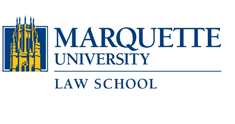Abstract
In this Essay, I will address media coverage of four incidents that occurred while I was living and teaching in Belgrade, the capital of Serbia and Montenegro, during 2003 to 2005: the March 2004 violence in Kosovo; a visit to Sarajevo, the capital of Bosnia and Herzegovina, in January 2005; the International Competition for Online Dispute Resolution (ICODR) during the winter of 2005; and a remembrance of the tenth anniversary of the Srebrenica Massacre in May 2005.
It is the business of conflict resolution professionals to look beyond the contours of the conflict situations in which they work. Filling in this background is done by asking many questions—questions about the context out of which the conflict arises, questions about the facts and the feelings that give form to the conflict, questions about where continuing the conflict in its present form will lead—and by listening carefully to the answers, both what is said and what remains unsaid.
As a person without a personal stake in the outcome of the dispute, the conflict resolution professional helps those involved in a conflict examine the various aspects of the situation from outside themselves, perhaps from the shoes of the other, through the lens of history, or from the viewpoint of children of the future. Often, even with the assistance of the neutral, the conflict does not go away but may take on a size and shape that is manageable enough to be contained.
To what extent is the job of the reporter or journalist similar to the job of the conflict resolution professional? Or perhaps more to the point, to what extent does the reporter or journalist perform a better service by exploring the context, history, and ramifications of the event about which he or she is reporting?
Repository Citation
Lynn M. Malley,
Observations from an American Conflict Resolution Professional in Serbia on the Effects of the Accessibility of International Media,
93 Marq. L. Rev. 241
(2009).
Available at: https://scholarship.law.marquette.edu/mulr/vol93/iss1/15
